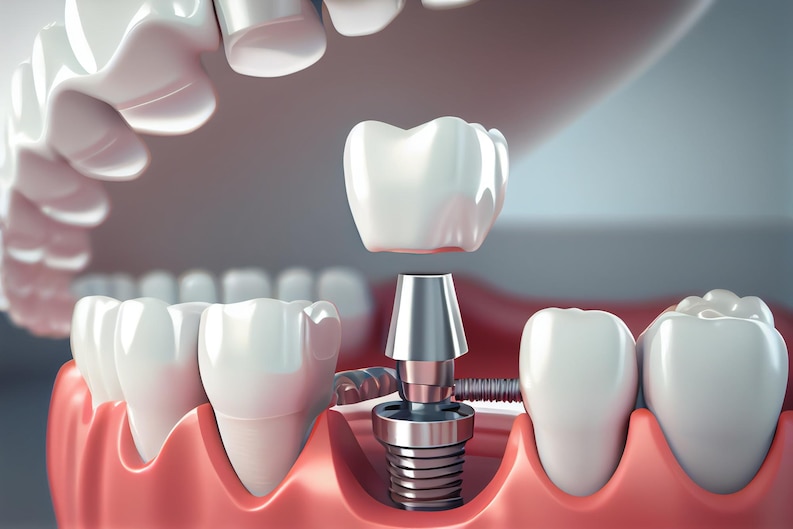What is a Dental Implant?
It is a screw system made of titanium, which replaces the tooth root, which is placed in the jawbone in order to restore the function and aesthetics of the teeth lost for various reasons.

In which cases is a dental implant performed?
- Single tooth loss
- Partial or total tooth loss
- In cases where adequate retention cannot be achieved with total (full palate) prostheses
- In patients who have difficulty in using partial (half) or total (full palate) prosthesis
- in patients with long edentulous spaces
- It may be preferred in patients who have bone loss and therefore the prosthesis does not hold.
What are the advantages of a dental implant?
- Dental implants are long-lasting and can be used just like a natural tooth.
- Tooth deficiencies are eliminated with dental implants without damaging the neighboring teeth.
- Dental implants play an active role in preventing bone loss in edentulous areas by acting as tooth roots.
- Dental implants facilitate feeding as they increase chewing power.
- It protects the aesthetic appearance of the face by preventing the collapse of the lips and cheeks caused by tooth loss.
- Dental implants, like natural teeth, allow words to be pronounced correctly and spoken easily and naturally.
- While the losses in the anterior region create aesthetic concerns, a more natural smile is achieved after the implant.
- It prevents position changes that may occur in neighboring teeth after tooth loss.
When is the implant made after tooth extraction?
After the tooth extraction, it can be waited for at least 2-3 months for the extraction site to ossify again.
Is it possible to have an implant immediately after tooth extraction?
In order for the implant to be placed immediately after tooth extraction, there should be no serious bone loss and infection at the extraction site. If there is sufficient bone thickness and depth after tooth extraction, the implant can be placed in that session.
What should be considered after implant surgery?
- Pressure should not be applied to the implanted area by touching the mouth with the tongue or finger.
- Ice should be applied to the implanted area from the outside of the mouth at intervals of 5 minutes until the night is laid down. When you go to bed at night, you should put an additional pillow under the head.
- Daily oral care should be continued, care should be taken not to touch the areas where the stitches are.
- Extremely hot, cold, hard foods and bitter, sour and acidic drinks should not be consumed until the stitches are removed.
- Avoid smoking and drinking alcohol until the stitches are removed.
- Prescribed antibiotics, painkillers and mouthwashes should be used regularly.

